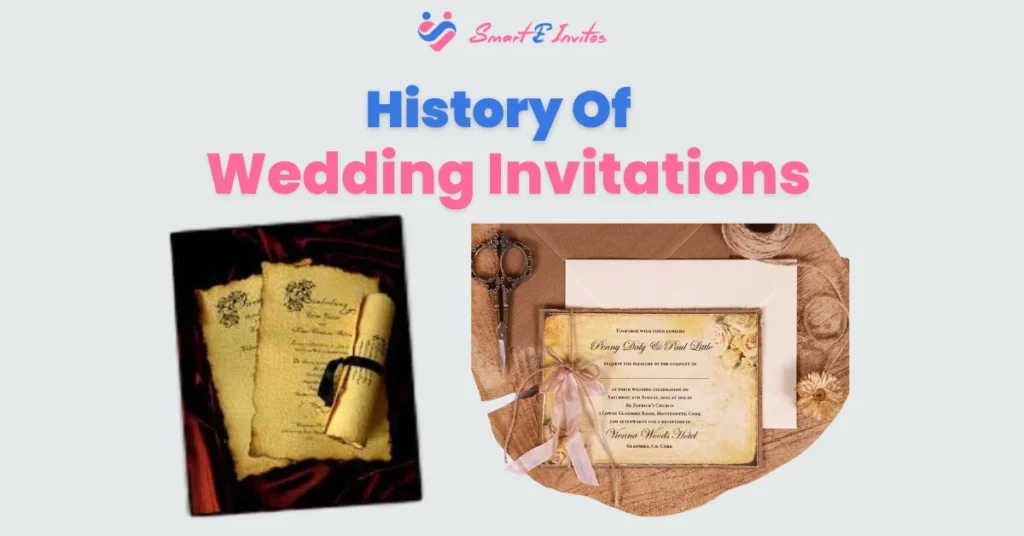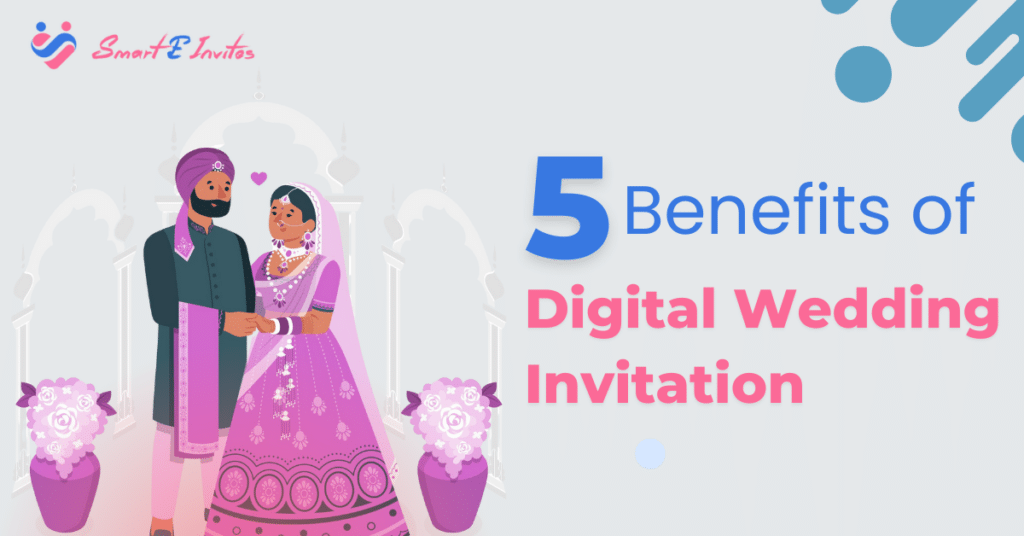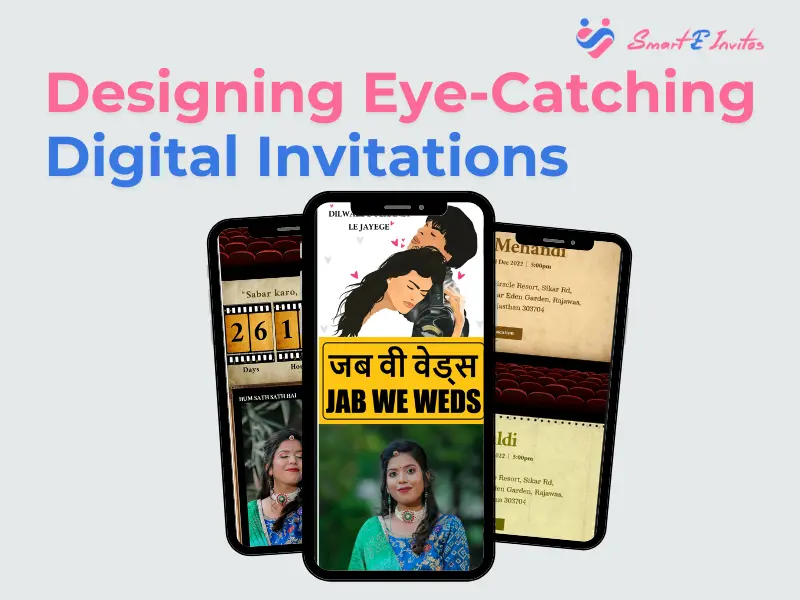One of the most cherished traditions is the exchange of invitations and the wide history of wedding invitations. These carefully crafted pieces of paper hold practical information and a touch of history, culture, and art within them.
The journey of wedding invitations is fascinating, spanning centuries and continents. In this blog, we will look into the captivating history of marriage invitations. Also, we will explore how they evolved from ancient scrolls to the digital age.
Significance Of Wedding Invitations
Before we embark on this historical journey, let’s first understand the true essence of wedding invitations. Beyond mere pieces of paper, wedding invitations are guests’ initial glimpse into the grand celebration. They set the tone, convey the theme, and provide essential details that guide attendees through the event. It’s about informing and inviting loved ones to share in the joyous union.
Evolution And History Of Wedding Invitations
As we venture deeper into history, we will discover how wedding invitations transformed from simple announcements to intricate works of art. Let’s explore the history of wedding invitations, beginning with the earliest civilizations.
The Earliest Wedding Invitations In Ancient Times
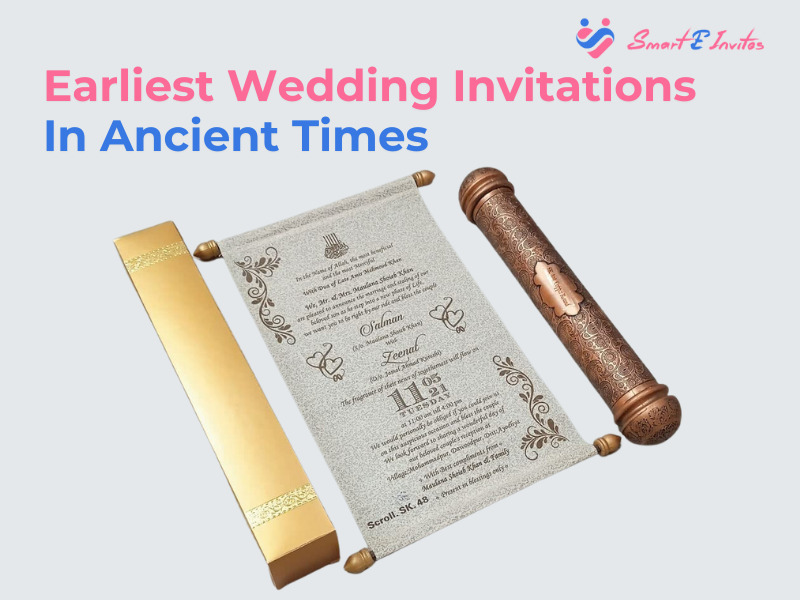
Early Forms of Wedding Announcements
Long before the advent of printing presses and digital communication, societies found unique ways to announce weddings. Moreover, in ancient times, these announcements were often verbal or carried by messengers. The anticipation and excitement surrounding such announcements were palpable, reflecting the significance of this life-changing event.
Role of Handwritten Scrolls and Messengers
Handwritten scrolls were central to the communication of weddings in civilizations like Egypt, Greece, Rome, and China. Scribes carefully penned these scrolls, adding an air of exclusivity and importance to the message they carried. Moreover, messengers would travel far and wide to deliver these scrolls, ensuring the news reached the intended recipients.
Ancient Civilizations: Egypt, Greece, Rome, India and China
Egypt
In ancient Egypt, papyrus scrolls were used to announce weddings among the elite. These scrolls, adorned with intricate hieroglyphics, conveyed the event details and blessings for the couple’s prosperous future.
Greece
The Greeks celebrated weddings with oral announcements followed by communal feasts. Moreover, the marriage announcement often marked the beginning of a grand celebration in which the community participated.
Rome
Roman wedding invitations were etched onto metal or stone, showcasing the importance of the event. These invitations were considered formal declarations of commitment.
China
In ancient China, wedding invitations were crafted with meticulous attention to detail. Elaborate designs and calligraphy showcased the family’s social standing and taste.
India
The history of Indian marriage invitations is intricately handcrafted scrolls adorned with traditional motifs, reflecting the region’s rich cultural heritage.
Wedding Invitations In the Middle Ages
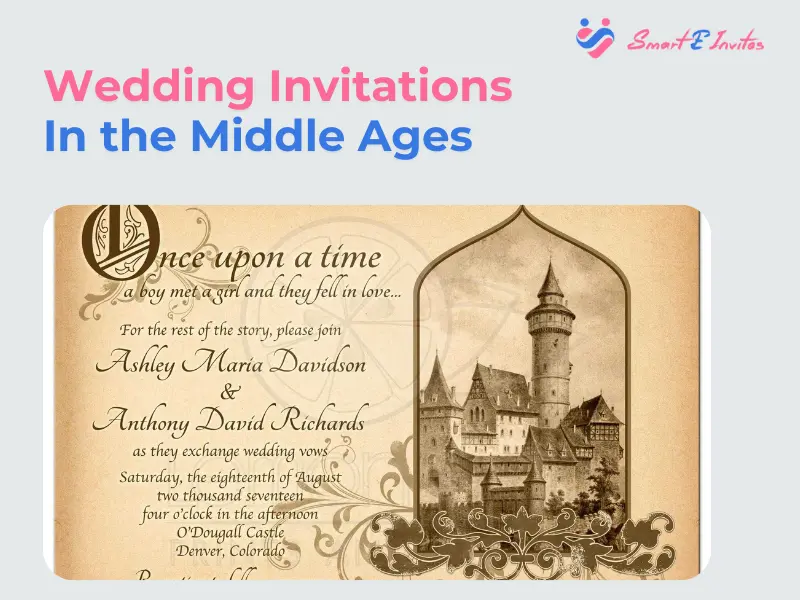
Transition to More Elaborate and Artistic Invitations
As societies evolved, so did the art of wedding invitations. As a result, the Middle Ages saw a transition from verbal announcements to visually striking invitations. These invitations began to reflect the creative spirit of the times, featuring intricate designs, symbols, and illustrations.
Influence of Religious Institutions on Wedding Announcements
During the Middle Ages, religious institutions played a significant role in wedding announcements. Weddings were often solemnized within the church, and invitations carried the blessings of the clergy. Moreover, illuminated manuscripts and religious motifs were incorporated, infusing invitations with a sense of divine importance.
Usage of Illuminated Manuscripts and Calligraphy
Illuminated manuscripts, characterized by intricate hand-painted illustrations and decorative borders, became a hallmark of medieval wedding invitations. Moreover, skilled calligraphers lent their expertise to create invitations that were as much works of art as functional announcements.
Societal Factors Affecting Invitation Styles
Invitation styles during the Middle Ages were influenced by societal factors such as class distinctions and the availability of resources. While aristocrats showcased their wealth through lavish invitations, commoners relied on simpler designs. The Middle Ages marked the beginning of the divide between extravagant and understated invitations.
Printing Revolution Of Wedding Invitations
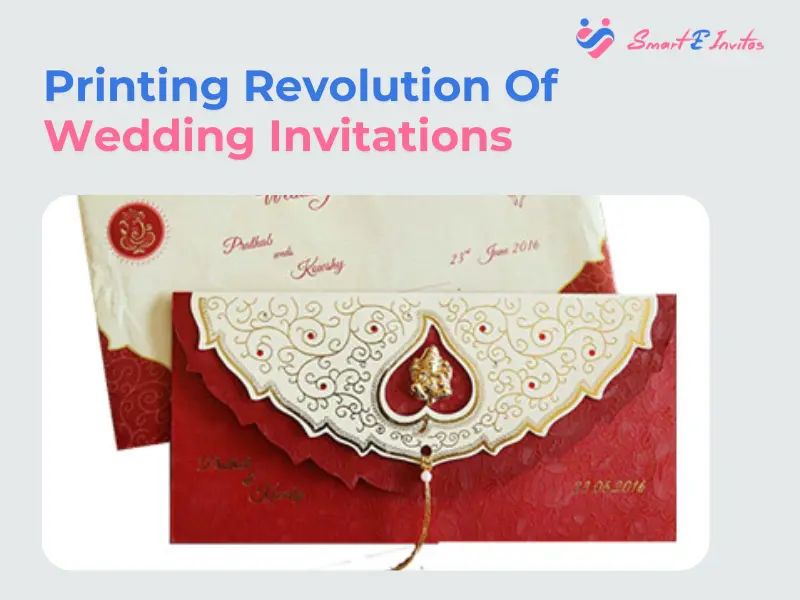
Emergence of Printing Technology and Its Impact on Wedding Invitations
The Renaissance brought about a revolutionary change in the world of wedding invitations with the advent of printing technology. As a result, this innovation democratized access to invitations, making them more accessible to a wider audience.
Rise of Engraved Invitations Among the Aristocracy
Engraving, a technique that allowed intricate designs to be etched onto metal plates, gained popularity among the aristocracy. Engraved invitations were symbols of refinement and sophistication, embodying the elegance of the Renaissance era.
Introduction of Decorative Motifs, Monograms, and Wax Seals
With the ability to reproduce intricate designs, decorative motifs, monograms, and wax seals became staples of Renaissance invitations. Moreover, these embellishments added a touch of personalization and served as status symbols.
Accessible Wedding Invitations In the 19th century
Industrialization and Accessibility of Printing Methods
The 19th century witnessed the impact of industrialization on wedding invitations. However, a major credit goes to Johannes Gutenberg for establishing a printing press long before. Moreover, printing methods became more accessible and efficient, leading to a wider distribution of invitations across social classes.
The Significance of the Industrial Revolution on Wedding Invitations
The Industrial Revolution accelerated the production of wedding invitations, making them more affordable and standardized. Invitations no longer remained the privilege of the wealthy elite; they became a tradition embraced by a broader spectrum of society.
Expansion of Middle-Class Weddings and Evolving Invitation Trends
As the middle class grew, so did the demand for wedding invitations. This led to new trends in invitation design, such as embossing, which added depth to the cards. Middle-class couples sought invitations that reflected their tastes and aspirations.
Use of Early Photography in Invitations
The introduction of photography in the 19th century brought a new dimension to wedding invitations. Couples began incorporating daguerreotypes of themselves into their invitations, marking a departure from illustrated portraits. This innovation added a personal touch, allowing guests to glimpse the faces of the bride and groom before the big day.
Stepping Into Modernization With 20th Century
Art Deco Influences on Invitation Design
The 20th century brought the influences of the Art Deco movements, which left a mark on the wedding invitation design. These styles favored geometric shapes, bold colors, and intricate patterns, creating visually stunning invitations symbolic of the times.
Customization Options and Mass Production of Invitations
Advancements in printing technology allowed for greater customization options while enabling mass production. Couples could now choose from various fonts, colors, and layouts, tailoring their invitations to match their preferences.
Read More – Wedding Invitation Quotes
Incorporation of New Materials, Such as Lace and Ribbon
In the 20th century, invitations evolved from being solely paper-based to incorporating various materials. Lace, ribbon, and fabric accents added tactile elements, elevating invitations from mere announcements to tactile experiences.
Role of Pop Culture and Media on Invitation Trends
The 20th century also saw the influence of pop culture and media on wedding invitation trends. Couples began to incorporate themes from their favorite movies, books, and music into their invitations, reflecting their interests and adding fun.
Contemporary Era Of Online Wedding Invitations
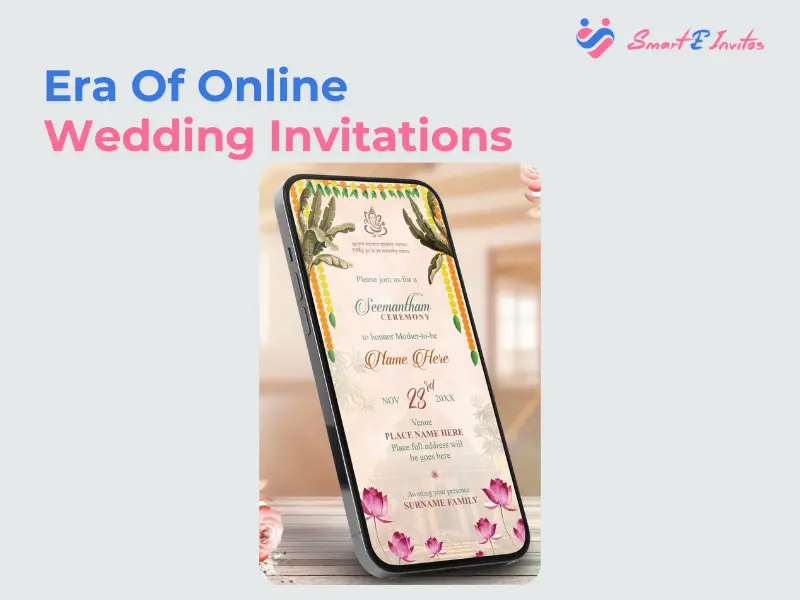
Digital Revolution and Its Impact on Wedding Invitations
The turn of the 21st century marked the onset of the digital revolution, which positively impacted wedding invitations. The transition from physical to digital invitations began, offering new avenues for creativity and convenience.
The Rise of Online Invitations and E-Cards
Online invitations and e-cards gained popularity due to their eco-friendly and easy distribution. Couples could now design and send invitations with just a few clicks, reducing paper waste and saving time.
Sustainability and Eco-Friendly Invitation Options
As environmental concerns grew, couples started exploring sustainable invitation options. Recycled paper, plantable invitations, and digital RSVPs became integral to modern wedding invitations, reflecting a commitment to eco-conscious celebrations.
Personalization Through Photo-Based Invitations and Custom Illustrations
Digital invitations allowed for personalized touches like never before. Couples could now include photos, illustrations, and videos in their invitations, creating a more intimate connection with their guests.
Cultural and Regional Variations In Wedding Invitations
Diverse Wedding Invitation Traditions Around the World
Wedding invitations are deeply rooted in cultural and regional traditions. From intricate scrolls in India to red envelopes in China, every culture uniquely invites guests to celebrate love and unity.
Comparison of Eastern and Western Invitation Styles
Eastern and Western invitation styles often showcase distinct characteristics. Eastern invitations tend to be more intricate, often featuring vibrant colors, intricate patterns, and traditional symbols. Western invitations, on the other hand, lean towards elegance and minimalism, focusing on typography and design.
Incorporation of Cultural Symbols, Colors, and Practices
Cultural symbols, colors, and practices are crucial in wedding invitations. In India, for instance, using auspicious colors like red and gold symbolizes prosperity and good fortune. Similarly, Celtic knots and motifs are often integrated into Irish wedding invitations, paying homage to tradition.
Modern Trends and Innovations
Minimalist and Modern Invitation Designs
In recent years, minimalist design has gained traction in wedding invitations. Clean lines, simple typography, and ample white space create elegant and contemporary invitations.
Rise Of Technology Like QR Codes and Interactive Elements
Technology has introduced new dimensions to wedding invitations. QR codes can now lead guests to event details or personal websites, while interactive elements like animations add playfulness.
Virtual Reality and Augmented Reality Invitations
Augmented reality (AR), along with virtual reality (VR), take wedding invitations to a new level. Couples can now invite guests to immersive experiences, allowing them to explore the wedding venue or interact with 3D elements virtually.
Use of Social Media for Wedding Announcements
Social media platforms are a reliable medium for wedding announcements. Couples share engagement stories, countdowns and even live stream their ceremonies, allowing friends and family to participate from afar.
Read More – Perfect Time To Send A Wedding Invitation
The Future of Wedding Invitations
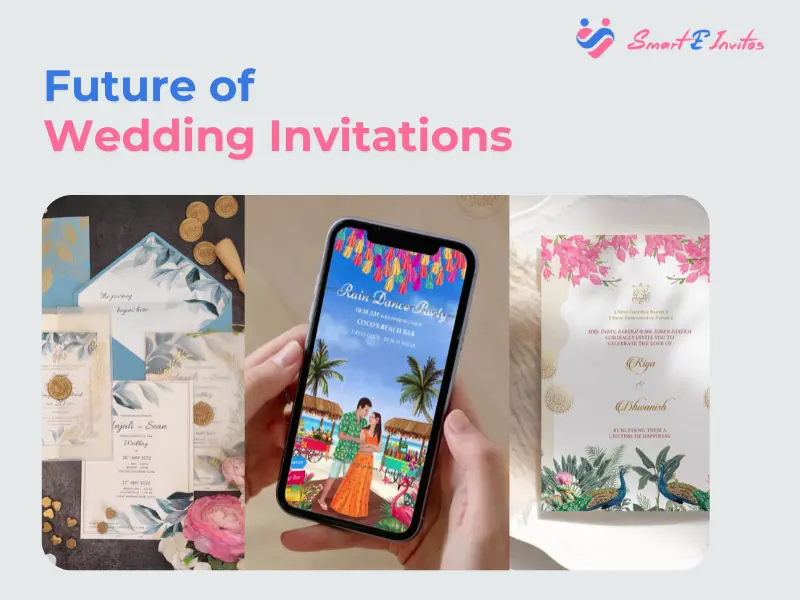
Predictions for Invitation Trends in the Coming Decades
As technology is evolving, so is the realm of marriage invitations. Virtual reality tours, holographic elements, and AI-generated designs could become commonplace, redefining how we invite guests to our celebrations.
Integration of AI and Customization in Invitation Creation
Artificial intelligence has a significant role in creating personalized invitations. AI algorithms could analyze couples’ preferences and generate unique designs that resonate with their style.
Balancing Tradition with Innovation in Wedding Announcements
While technology offers exciting possibilities, balancing tradition and innovation will remain essential. Couples will continue to seek ways to infuse modern elements into their invitations while honoring their cultural heritage.
Conclusion
Marriage invitations serve as mirrors that reflect the evolving values and aesthetics of different eras. They capture the essence of each period, showcasing how celebrations have evolved alongside societies.
The history of wedding invitations is a journey through time that reflects the ever-changing landscape of human culture. As we embrace the future, the allure of wedding invitations remains a timeless reminder of the joyous union between two souls.
FAQS
Ques 1. What is the origin of wedding invitation cards?
Ans. Wedding invitation cards originated as a means to formally request the presence of guests at marriage ceremonies.
Ques 2. When did the tradition of sending formal wedding invitations begin?
Ans. The tradition of sending formal wedding invitations began during the Renaissance, gaining popularity in the 17th century as printing technology advanced and social status became linked to elaborate invitations.
Ques 3. What are some popular wedding invitation trends inspired by history?
Ans. Some popular wedding invitation trends inspired by history include vintage motifs, calligraphy, and wax seals.
Ques 4. What role did religion play in wedding announcements during the Middle Ages?
Ans. Religious institutions held significance during the Middle Ages, and weddings were often conducted within churches. Wedding invitations carried the blessings of clergy and featured illuminated manuscripts and religious motifs, adding a divine touch.
Ques 5. How did the Industrial Revolution affect wedding invitations in the 19th century?
Ans. The Industrial Revolution made wedding invitations more affordable and standardized by accelerating production. Johannes Gutenberg’s printing press innovation played a crucial role in democratizing access to invitations across social classes.
